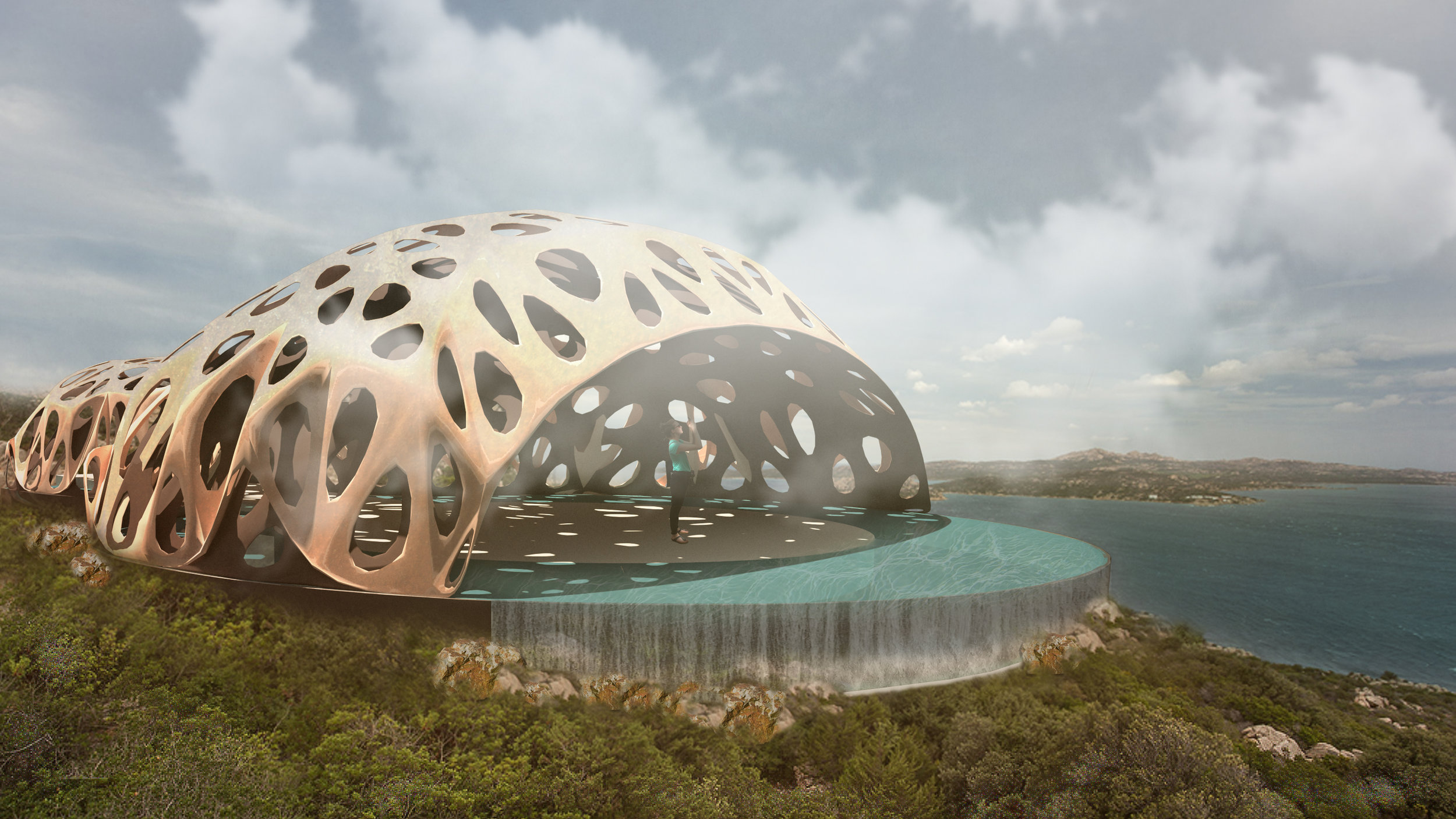THE MUSEUM OF MEDITERRANEAN CONQUESTS
The museum of Mediterranean conquests, Sardinia, Italy [2018]
The museum occupies an old coastal fort located in the north of Sardinia and hosts the history of the Mediterranean through conquest, exploration, and trade.
The surrounding landscape serves as an inspiration for the physical expression of the additions. Mimicking the qualities of the honeycomb weathering, tafoni, evident in the Capo d’Orso rock formation nearby, the new sunshade will integrate with its surroundings. Honeycomb weathering is a distinct condition of this location whereby the saltwater and the air contribute to the gradual removal of stone from solid portions resulting in smooth rounded concave walls in the solid stone. The fortress itself is a physical manifestation of the gradual effects of time displaying its own gradual disintegration. The coastal artillery has been removed and evidence of roof structures has almost all but disappeared. The sun now bears directly on the interior spaces where cool breezes from the ocean blow through. By bringing in a new sunshade device these spaces can once again provide a cool respite from the direct sun. Panels are infilled in order to increase the shaded region and provide an interface for additional functionality. This new shading structure is iconic for its geographical location and distinct from the historic surroundings into which it will integrate.
The infill panels are utilized in three different functions: as solar panels, planters, and without an infill. The solar panel infills are optimized to increase their efficiency by being oriented and located according to the amount of solar radiation they absorb during the year. In the sectional solar analysis diagram shown below redder panels indicate more solar radiation per year while yellow and blue panels have less. The quantity of panels is determined based on the estimated required energy use of the entire site. The goal of their integration is to achieve net-zero design by investing in the highest quality solar panels and batteries. Once the optimized solar panel locations have been selected, additional panels are occupied with planters. These planters incorporate the new structure into the landscape, provide a biophilic experience, and absorb carbons from the atmosphere. The remaining panels are left open to allow the sea breeze to permeate through the structure, cooling off both the solar panels and the occupants.
Gallery View
Minimal interventions into the existing structures were required in order to create an environment suitable for the display of art and artifacts. This gallery features new flooring, insulating glazing, and demountable lighting fixtures.
The museum itself will occupy the interior spaces of the old fortress. New walls will be introduced strategically in order to enclose gallery spaces for artifact preservation. The main entrance sequence follows the historic path and visitors arrive at the gallery entrance. As visitors wind through the labyrinth of spaces they are confronted with the patriotic efforts extolled in past national defense, the excitement of Mediterranean exploration, and the tragedy of human life lost. The galleries are organized sequentially and take the long narrow corridor where guests will witness a continuous timeline in which important events and inventions to the Mediterranean, seafaring, and warfare are highlighted. The final room where former artillery shells were loaded in provides an axial view across the landscape towards the rock formations and reintroduces the visitor to the origins of the iconic patterns of slow destruction in stone.
Memorial interior
The narrow portal surrounded by a slow moving fountain and enclosed in the double layer of tafoni screen intensifies the experience of entering another dimension. Visible in the distance is the continuous expanse of water where the edge of the fountain disappears into the Mediterranean. The tunnel expands into a larger volume where the path ends surrounded in water. The visitor is confronted with the opportunity to stop and reflect on all of those who have served a greater cause.
Memorial exterior
The formal qualities of the memorial take on the aspects of a cave or tomb. This underground space has been exposed by the slow weathering of the landscape.

















